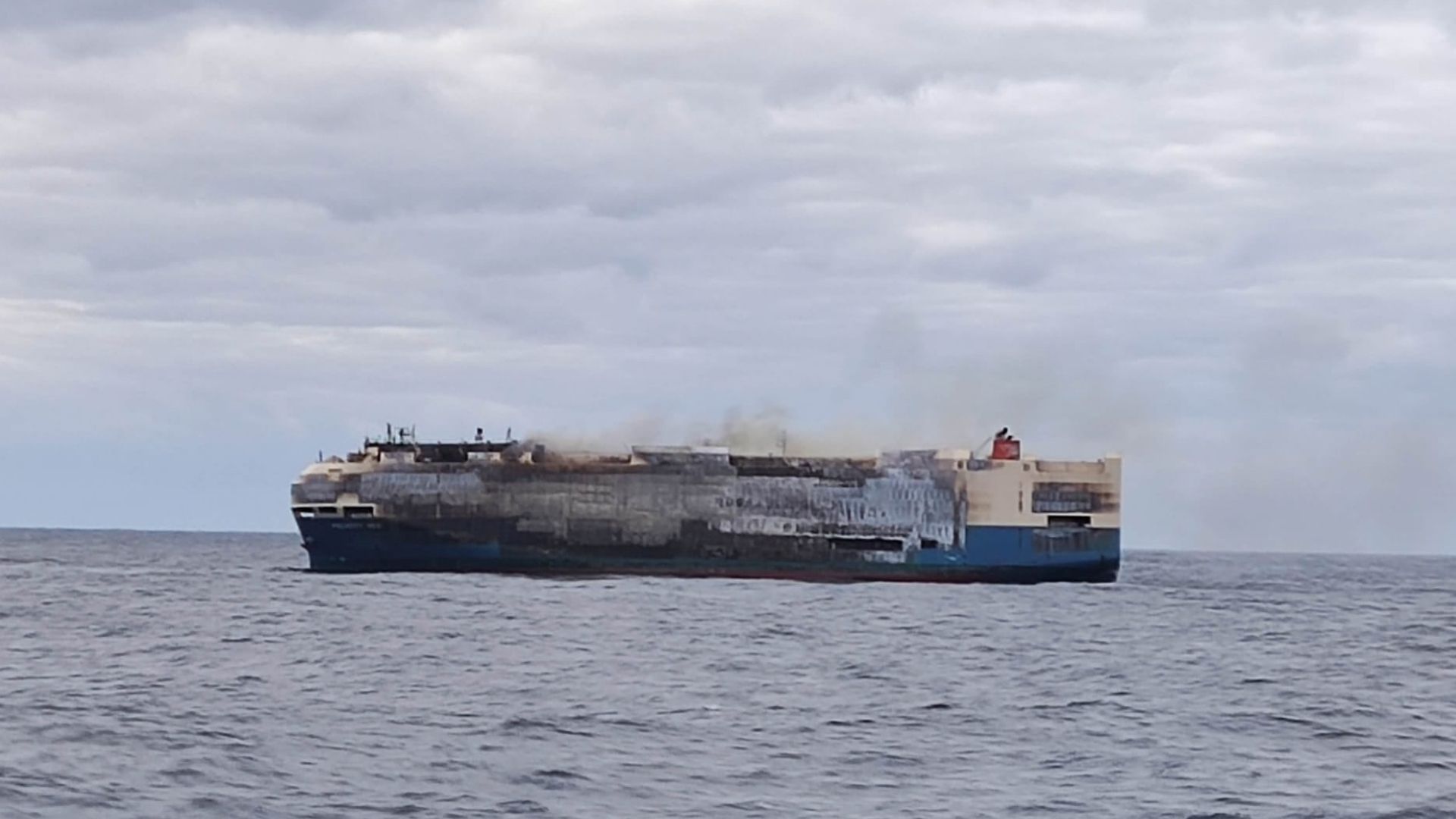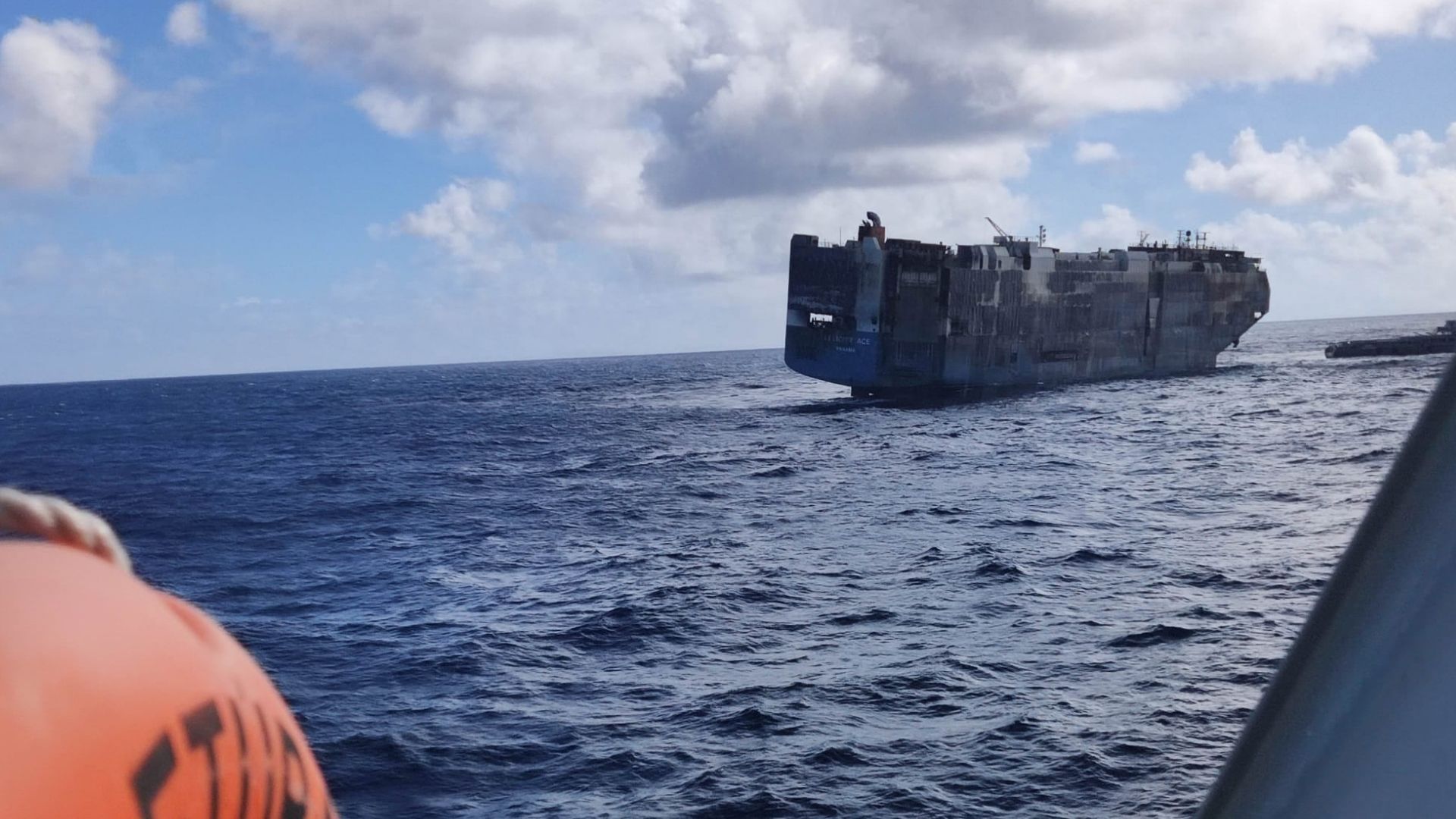And thus the ecological disaster continues…
As we covered last month, a large cargo ship, the Felicity Ace, laden with about 4,000 vehicles onboard caught fire in the middle of the Atlantic Ocean. Putting out that fire would seem to be a fairly easy task since there’s all kinds of water. However, the burning lithium-ion batteries from the many electric and hybrid vehicles in the ship made fighting the blaze more difficult. Portugal was reportedly putting together a ship with special equipment to smother the flames using dry chemicals. It appears they were too late, because the Felicity Ace sunk.
Check out the latest episode of the Motorious Podcast here.
According to multiple reports, the cargo ship sunk near the Azores Islands about 9 am local time on Tuesday, March 1. This was officially announced by the Portuguese navy via its Facebook page. The vessel lost stability in waters where the depth is approximately 3,000 meters or over 9,800 feet. The area is an archipelago with many coral reefs, seamounts, tuna, dolphins, sharks, humpback whales, and other wildlife. All this unfolded after an operation to tow the boat by a salvage crew began on February 24.

For those concerned with the environment, you won’t be relieved to know the Portuguese navy says there’s only “small stain of oily waste” and “some debris” where the burning ship once floated listlessly. In other words, those lithium-ion batteries are no longer producing incredibly toxic emissions along with all that burning plastic. Instead, the ruptured cells are now sleeping with the fishes.
To clean up the surface of the water, which apparently is the only real concern, the Portuguese Department of Pollution of the National Maritime Authority and the European Maritime Security Agency and spraying water jets to disperse the oil and debris. Once again, governments have come to the rescue to brush a disaster under the rug. If you can’t see the mess anymore, it’s not a problem!

Somehow, all 22 people onboard the Felicity Ace made it off the cargo ship without sustaining any injuries. It’s still unknown what started the fire, but we do know the lithium-ion batteries kept it burning nice and super-hot since it started on February 16. The total loss of the ship and its contents is estimated at about $438 million. What’s more, at a time when there’s a serious car shortage thanks to a lack of semiconductor chips and other components, this will only stress the market further.
Photos via Facebook






